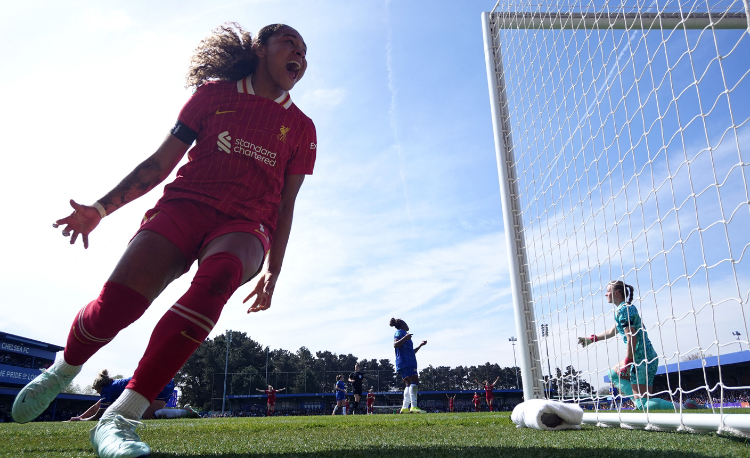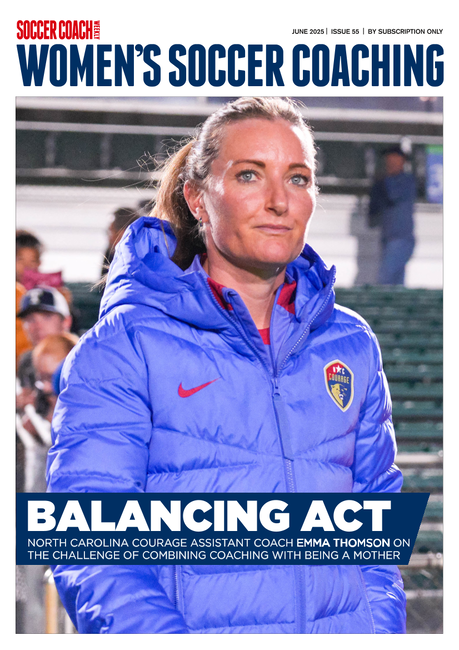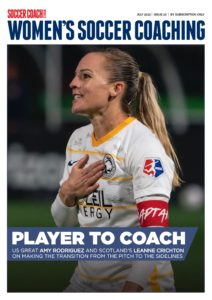You are viewing
1 of your 3 free articles
Navigating player exodus: strategies for coaches facing the departure of senior players
WSC Editor Hannah Duncan shares some ideas for dealing with senior players leaving your team, considering how it impacts those that remain
The departure of several senior players at the end of a season can send shockwaves through any club, even if you know it might be on the cards.
These key individuals often serve as the spine and heartbeat of the team, providing leadership, experience and stability. For a coach, this situation demands swift and strategic action to maintain team morale, cohesion and performance.
Here are some ideas for how to effectively manage and navigate this challenging period.
Assess and acknowledge the situation
The first step is to assess the full extent of the impact caused by the departure of senior players. Understand the reasons behind their exit, whether it’s due to retirement, transfers, or other personal decisions. Acknowledging the situation transparently with the team is crucial. Open communication helps to address any rumours or concerns and shows the remaining players that you are in control and proactive in dealing with the changes.
Rebuild team morale and unity
Losing senior players can significantly affect team morale. It’s essential to rebuild and reinforce team unity to prevent further disruption. Organise team meetings and activities that encourage bonding and collaboration. Emphasise the importance of every player’s role in the team’s success and instil a collective responsibility. A strong, united team spirit can mitigate the impact of losing key members.
Identify and develop new leaders
With the departure of senior players, there’s an opportunity to identify and develop new leaders within the team. Look for players who display leadership qualities, such as strong communication skills, a positive attitude, commitment and the ability to inspire others. Provide these emerging leaders with mentorship and responsibilities that allow them to grow into their roles. This transition can help fill the leadership void and maintain team stability. Fresh ideas and voices can also be a welcome change.
Promote from within
When senior players leave, consider promoting talent from within the club’s ranks. Elevating younger or less experienced players to fill the gaps can boost their confidence and foster loyalty. Implement personalised development plans for these players to accelerate their growth and readiness for higher responsibilities. This approach not only fills immediate gaps but also strengthens the team’s long-term potential.
Strategic recruitment
If internal promotions aren’t sufficient, strategic recruitment is necessary to bolster the team. Look for players who not only possess the required skills but also fit well with the team’s culture and values. Prioritise versatility and adaptability to ensure new recruits can integrate smoothly and contribute effectively. Timely and well-planned recruitment can minimise disruptions and maintain the team’s competitive edge.
Adjust tactics and strategies
The loss of senior players might necessitate a tactical overhaul. Reevaluate your team’s strengths and weaknesses in light of the changes and adjust your strategies accordingly. This might involve tweaking formations, altering playing styles or assigning new roles to existing players. It may even be an opportunity for you to reassess your entire game model.
Maintain open communication
Consistent and transparent communication is vital during this transitional period. Keep the team informed about your plans, decisions and progress – without overloading them with any stressful situations. Address any concerns or questions they might have and provide reassurance about the future direction of the team. Open communication fosters trust and helps to keep everyone aligned and focused on common goals.
Focus on mental resilience
The sudden departure of senior players can be emotionally and mentally challenging for the remaining team members. Emphasise the importance of mental resilience and provide support as needed. Incorporate mental resilience training, mindfulness exercises and stress management techniques into your routine. Ensuring that players are mentally prepared and supported can significantly impact their performance and wellbeing.
Shape the team’s identity and goals
Sit down with your players and encourage them to lead on outlining the team’s goals for the season and provide them with the tools to shape the standards and values required to get there. A shared sense of purpose can motivate players to work together and strive towards common objectives, even in the face of adversity.
Embrace change as an opportunity
Finally, embrace the change as an opportunity for growth and evolution. While the departure of senior players can be daunting, it also offers a chance to refresh the team’s dynamics, bring in new talent and reconsider strategies. Approach the situation with a positive mindset and a focus on the potential benefits that these changes can bring.
The sudden departure of several senior players can be a significant challenge for any coach. However, by assessing the situation, promoting team unity, identifying new leaders, strategically recruiting, providing ownership and maintaining open communication, coaches can navigate this period effectively.
Embracing change as an opportunity for growth can ultimately lead to a stronger, more cohesive team. By taking proactive and strategic steps, soccer coaches can ensure their teams remain resilient and competitive, even in the face of significant player turnover.
Related Files
Newsletter Sign Up
Newsletter Sign Up
Discover the simple way to become a more effective, more successful soccer coach
In a recent survey 89% of subscribers said Women's Soccer Coaching makes them more confident, 91% said Women's Soccer Coaching makes them a more effective coach and 93% said Women's Soccer Coaching makes them more inspired.
*includes 3 coaching manuals
Get Inspired
All the latest techniques and approaches
Women's Soccer Coaching offers proven and easy to use soccer drills, coaching sessions, practice plans, small-sided games, warm-ups, training tips and advice.
We've been at the cutting edge of soccer coaching since we launched Soccer Coach Weekly in 2007, creating resources for the grassroots youth coach, following best practice from around the world and insights from the professional game.








